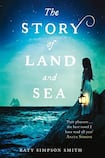
A colleague asked recently if I had to read a lot of mediocre books for this column. With its focus on emerging authors and debut novels, they wondered if the standard was lower, the fiction less convincing. They imagined that authors with two or three books under their belt must have a better grasp of what’s needed to create believable fictional worlds. These more experienced authors would avoid the pitfalls of debut novelists: showy language, clunky switches in perspective, bad dialogue, author interjections, the dreaded adverb.
This argument has some truth. Established authors often talk about their writing as a craft, a skill honed over time through hard work and practice. But the flip side of the coin, to use a lazy metaphor not at all honed over time, is that some first novels are much better than those that follow them.
The ideas that go into a debut novel have had a lifetime to develop, with the author working to their own deadline. The next book is often rushed by a publisher seeking to capitalise on a new author’s popularity.
Debut novels are also, arguably, of a higher standard because of an author’s anonymity. They must fight their way out of the slush pile, convince an editor in these straitened times that their story is saleable.
Every so often a debut comes along that stands out from the pack. Katy Simpson Smith's The Story of Land and Sea is one of them. Set in the US in the late 18th century, this generational tale of love and loss transports us to the world of its characters from the opening line: "On days in August when sea storms bite into the North Carolina coast, he drags a tick mattress into the hall and tells his daughter stories, true and false, about her mother."
The year is 1793, and John, a pirate turned soldier turned single father, lives with his nine-year-old daughter, Tabitha, in the humid coastal town of Beaufort. Although he would prefer to be at sea, he has made a home on land for his beloved Tab after her mother, Helen, died in childbirth.
Almost a decade later the loss of Helen still haunts them: “There are nights when neither of them can sleep in beds. This is what she has done to them.” Haunted too is the plantation owner Asa, Helen’s father, who lost his own wife in childbirth. These inherited tragedies draw the reader into the circles of pain and grief.
Asa blames John for taking his daughter to sea for a year. John blames the land for causing Helen’s death. When Tabitha becomes ill with yellow fever, the tension between the two landscapes, and the two men, comes to a head.
Slave girl
The narrative shifts back in time in the second part of the book to Helen’s privileged childhood on the plantation. For her 10th birthday she is given a slave girl, Moll, whose story becomes the focal point later on. Helen’s courtship with John, a soldier in the Revolutionary War, is well handled, understated and convincing.
The historical context is interesting, too, the irony of plantation owners battling for independence while keeping slaves.
Simpson Smith, who is 28 and originally from Mississippi, has a PhD in US history from the University of North Carolina, where she published a study of early American motherhood. This is a major theme in her novel, which sees the trope of the absent mother handed down through generations.
In the case of Moll, motherhood takes on a new dimension. Her children are not hers to love. They belong to her master and will go wherever he sends them. Moll detaches herself from the younger ones, but the primal instinct remains for her eldest son, Davy.
The action surrounding this relationship makes up the final part of the book. Introduced relatively late, and after such a vivid rendering of other relationships, it lacks the heft of what has gone before. This section reads more like an extension of earlier insights on slavery, which are memorably relayed by an assured and eloquent voice: “What is a life without the ability to choose? This over that; him, or not him. Moll’s life is not so distant from Moll’s death.”
In The Story of Land and Sea Simpson Smith breaks a host of supposed taboos for debut authors – omniscient narrator, shifts in point of view, major characters introduced and then killed off, plenty of reflection – but a book is much more than the sum of these parts.
A good novel, debut or not, hinges on the author’s storytelling and literary ability. With its evocative descriptions, lyrical language and poignant storylines, this book more than hits its mark.


